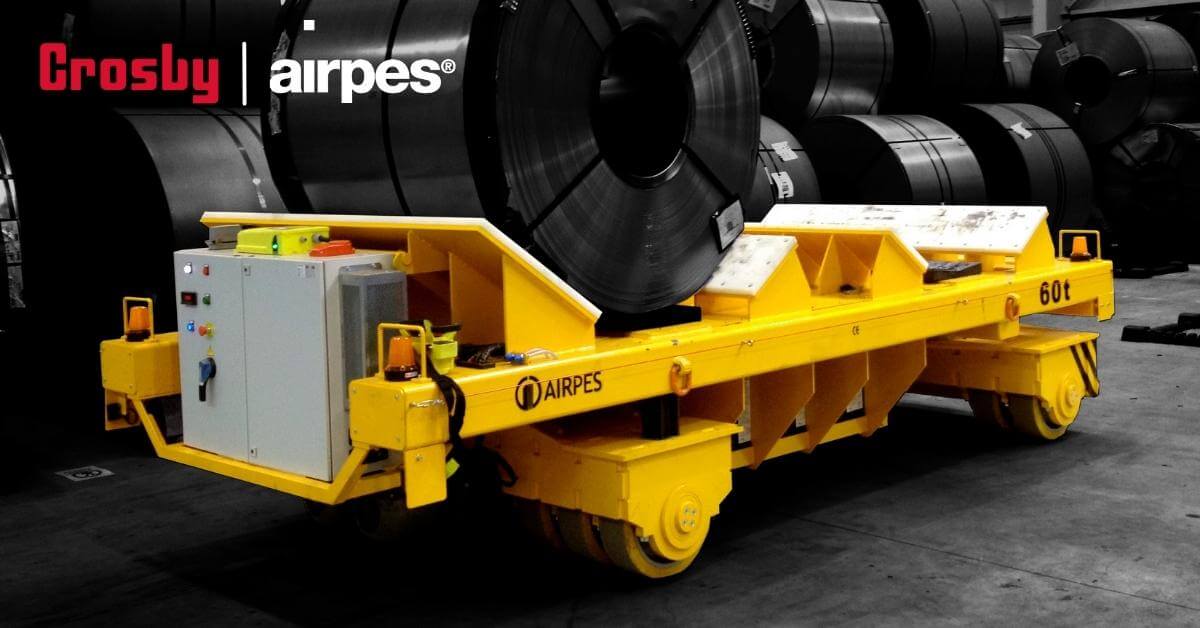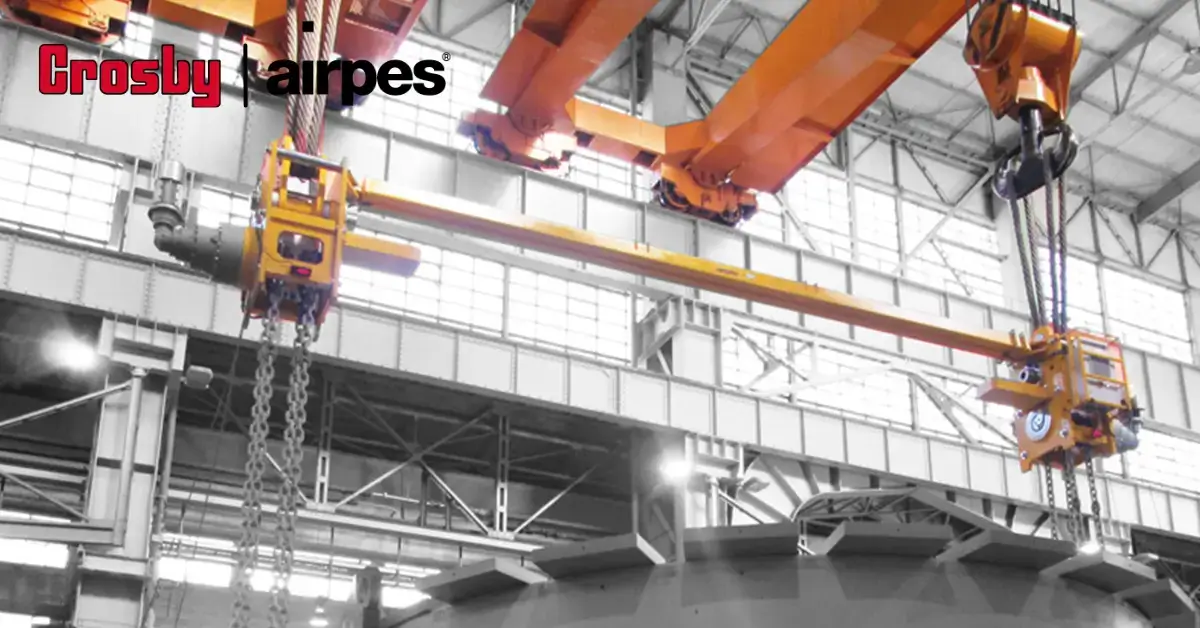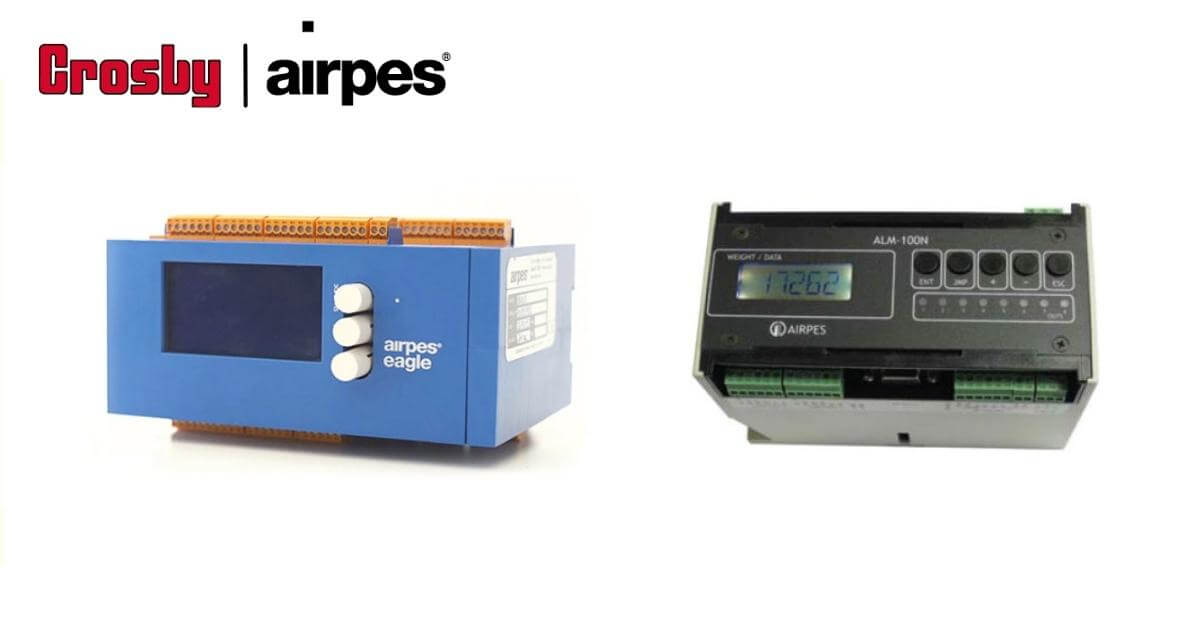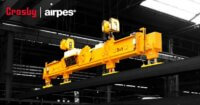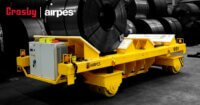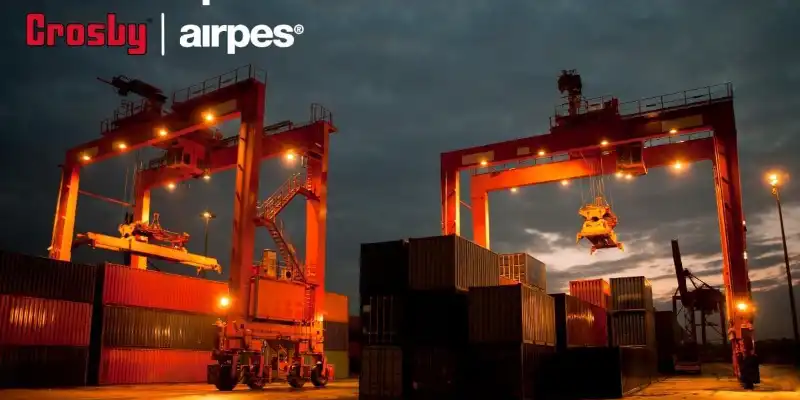
One Overhead Crane after being adjusted with new overhead crane parts from Airpes
If you work in industrial lifting, warehousing, or heavy equipment maintenance, understanding the full range of overhead crane parts is not just helpful—it’s essential. A well-designed overhead crane system improves productivity, minimizes downtime, and ensures safe and precise load handling.
In this guide, we’ll break down the most important overhead bridge crane parts, explain how each one functions, and help you make informed decisions when upgrading or maintaining your system.
The main Overhead Crane Components
Overhead cranes—also known as bridge cranes—consist of multiple integrated mechanical and structural elements that work together to transport loads across a defined area. Each part plays a unique role in load handling, and knowing how they work will help you make better decisions when installing, upgrading, or maintaining your system.
Here’s a breakdown of the core overhead bridge crane parts:
Bridge
The bridge is the primary horizontal beam structure that spans the width of the workspace. It supports the trolley and hoist and travels along two runway beams.
Depending on the application, the bridge may be a single-girder or double-girder configuration. Double girders are used for higher load capacities and longer spans.
Hoist
The hoist is the heart of the crane—it raises and lowers the load. It includes multiple overhead crane hoist parts such as:
· Motor and gearbox
· Drum or lifting chain
· Wire rope
· Brake system
There are two main hoist types: chain hoists (for lighter loads) and wire rope hoists (for heavy-duty applications).
Trolley
The trolley carries the hoist along the length of the bridge and enables side-to-side movement.
Trolleys can be motorized or push-type and are engineered for both speed and precision. At Crosby Airpes, we customize trolleys to fit your specific space constraints and operational needs.
Hook
The hook is the component that connects the crane to the load. It’s one of the most critical overhead crane hook parts, as it bears the full weight during lifting.
Airpes offers forged steel hooks with swivel and latch mechanisms for maximum safety and load control.
Hooks should be inspected regularly for signs of deformation or cracks, especially in high-frequency lifting environments.
Tracks
Tracks or rails are the area along which the trolley, hoist, and the crane itself travel to move over the work area. These can be rails on the floor in the case of gantry cranes, or rails on columns in the case of overhead portable cranes.
Below-the-hook system
The below-the-hook system, on the other hand, is a complementary element to the hoists that are used to hold and secure loads during the lifting process. A multitude of below-the-hook systems can be installed on an overhead crane, including specific designs for a particular job.
The Kito Crosby Group is a global leader in the innovation, manufacturing, and distribution of products and services that make lifting, rigging, and load securement operations safer and more efficient. Visit our website for more information about lifting accessories.
If you want to learn further on this topic, please read our article: types of lifting equipment
Power Systems
The power systems provide the power necessary to operate the overhead crane, including the hoist and rigging and the motors that move the crane along its rails. The power system includes all the cables and electrical installation necessary for the overhead crane to operate smoothly.
Control and safety systems
Control systems are all those impact sensors, limiters, load sensors, etc., designed to avoid exceeding the recommended weight limits, to avoid accidents and to control the crane’s behavior for safe operation.
The crane control systems allow the operator to manage and supervise the crane functions safely and efficiently and without exceeding the working limits of the installation.
Additional Overhead Crane Accessories
To ensure safe and efficient operation, cranes can be equipped with smart accessories, such as:
- Load limiters
- Anti-collision systems
- Radio remote control
- Condition monitoring systems
- Warning lights and alarms
These tools help prevent accidents, improve productivity, and ensure compliance with safety regulations.
Overhead Crane Parts and Functions: A Summary Table
| Part | Function |
| Bridge | Supports trolley and allows movement across the workspace |
| Tracks | Enable the bridge to travel along the runway |
| Hoist | Lifts and lowers the load |
| Trolley | Moves the hoist across the bridge |
| Hook | Connects to the load for lifting |
| Electrical System | Controls movement and ensures safe operation |
Understanding each part’s function is crucial for troubleshooting, preventative maintenance, and compliance with safety regulations.
Security systems you can find on a overhead crane
Modern overhead cranes have multitude of components designed to improve security and control of the machinery.
Electronic Limiters
Electronic limiters monitor and record data concerning the various lifting and weighing systems. They gather information from different elements of the elevation process.
Remote control systems
Remote crane monitoring and control is an advanced technology that allows you to remotely monitor and control the performance and status of your company’s or plant’s cranes. This innovative solution leverages automation, uses sensors, communication systems, and rope mechanisms to collect real-time data, providing detailed information on crane performance without the need for physical inspection./vc_column_text]
Parts of an Overhead Crane: Why Details Matter
Each part of an overhead crane plays a key role in system performance and safety. When any single component is poorly maintained or improperly specified, the entire system’s efficiency suffers.
For example:
- A worn-out hook can lead to dropped loads.
- A misaligned rail can cause bridge vibration.
- A low-grade hoist may overheat under frequent use.
That’s why at Airpes we offer complete assessments and customized component recommendations for your unique lifting needs.
We design the crane you need (or improve the components of one you already have)
Crosby Airpes specializes in lifting systems at all levels. We can design the crane or rigging system you need for your crane, as well as upgrade and modernize an installation you already have in place in your company.
Lifting equipment consulting available
When it comes to lifting equipment, having the right advice, inspections and controls can make all the difference. Crosby Airpes lifting equipment consulting offers a equipment expertise service to help companies make informed decisions and optimize their specific load handling operations. Ask us in our contact page to learn more about our tailored solutions.
Which type of installation is right for me?
Which system offers the least wear and tear and the longest life?
Which systems to install for use in different scenarios?
Our expertise service customer team will assess your specific needs and provide you with custom cranes or customized recommendations to maximize the efficiency and safety of your lifting equipment and cranes.
Whether it’s upgrading your existing cranes, adding new equipment or components or improving your maintenance practices, our consulting will guide you every step of the way:
- Lifting needs assessment: We analyze your requirements and advise you on the most suitable lifting equipment for your industry and specific applications.
- Lifting system design: We work with you to design customized solutions that optimize the performance of your cranes and lifting equipment.
- Safety improvement: We identify areas for improvement in your safety practices and provide recommendations to ensure a safe working environment while cranes are in operation.
- Performance optimization: We make inspections of your current operations and provide strategies to maximize the productivity and efficiency of your lifting equipment.
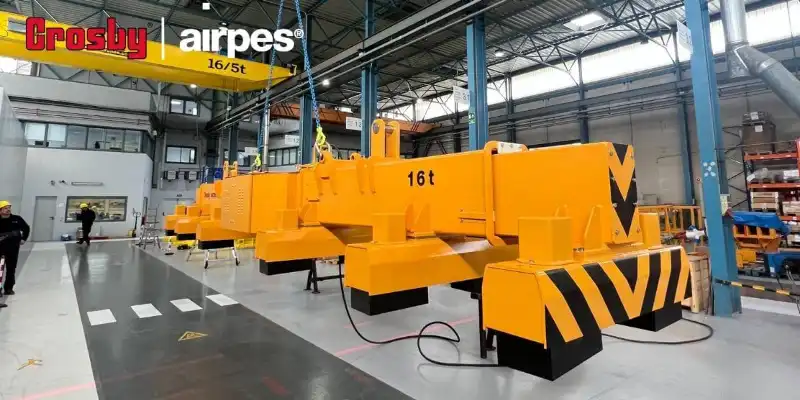
Airpes’ team manufacturing components for overhead bridge cranes
Our industry knowledge and experience allow us to offer effective solutions tailored to your specific needs, such as parts of a bridge crane. Our consulting service is also complemented with the service of Certification of lifting equipment and the possibility of testing cranes on a test bench.
We are your overhead crane component supplier
As you can see, although to the untrained eye it may seem that this is simple gear, behind a lifting equipment that works well even after tens of thousands of hours of accumulated work there is a very important previous work.
With more than 20 years of experience designing lifting solutions for global clients, Airpes is your ideal partner for:
- High-quality overhead crane parts
- Customized systems built to specification
- Technical consulting and after-sales support
- Compliance with international safety standards (ISO, CE)
From design to installation and maintenance—we’ve got your lifting system covered.
In which industries are overhead cranes used? Examples
Overhead cranes are used in a wide range of industries where heavy lifting and efficient material handling are required. . Proper training and the use of radio controls are essential to ensure safe and efficient use in various sectors, such as:
- Manufacturing: to move materials and products within factories.
- Construction: on construction sites for lifting building materials.
- Automotive industry: for assembling parts and transporting heavy products.
- Logistics and warehouses: to handle loads in distribution centers.
- Steel and mining industries: to transport minerals, metals, and heavy materials.
What safety features are typically included in crane components?
Crane components often include several safety features to ensure safe operations, such as:
- Load limiters: prevent overloading that could damage equipment or cause accidents.
- Emergency stop systems: allow quick shutdown of crane operations in risky situations.
- Speed and stability controls: ensure smooth and controlled movement of loads.
- Load monitoring systems: to check that weight does not exceed safe limits during operation.
- Sensors and alarms: detect unusual or hazardous movements.
How often should crane components be inspected?
Crane components, especially those that are mounted, should be inspected regularly to ensure their proper functioning and safety. It is generally recommended to perform a visual inspection daily before each use, detailed monthly inspections, and comprehensive annual reviews by a qualified technician.
How do environmental factors affect crane components?
Factors such as humidity, dust, extreme heat, or exposure to corrosive substances can negatively impact the durability and performance of crane components. For instance, corrosion can weaken materials, while dust can damage mechanical and electrical systems. Regular maintenance is essential, and specific components designed for harsh environments may be required.
How do I know when it's time to replace crane components?
Crane components should be replaced when:
- Signs of wear or damage are observed on even a single component.
- The crane’s performance significantly decreases.
- Periodic inspections identify issues with critical parts.
- The equipment no longer complies with current safety regulations. Regular inspections and maintenance records help determine the right time to replace components.
- Implementing systems that enable predictive maintenance can help identify potential issues early, allowing you to replace components before they fail, ensuring optimal performance and safety. Regular inspections and maintenance records also play a crucial role in determining the right time for replacements.
Are Airpes components compatible with other crane brands?
Yes, Airpes components are designed to be compatible with a wide range of crane systems, making integration and optimization easy.
Can Airpes systems be customized to meet client needs?
Yes, in Airpes we can customize our systems to meet specific client needs. We specialize in designing and manufacturing bridge crane components tailored to various industrial applications, ensuring optimal performance and safety. Our expertise allows us to adapt our products to the unique requirements of each project.
Can Airpes provide installation and maintainance services?
Yes, we offer complete services from initial setup to ongoing maintenance, ensuring your crane operates safely and efficiently throughout its lifecycle.

